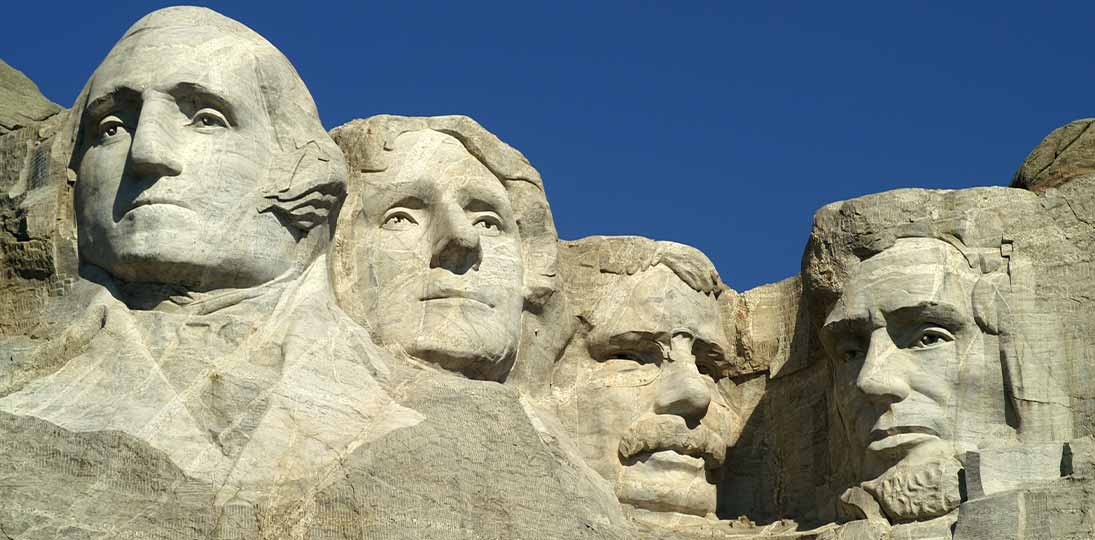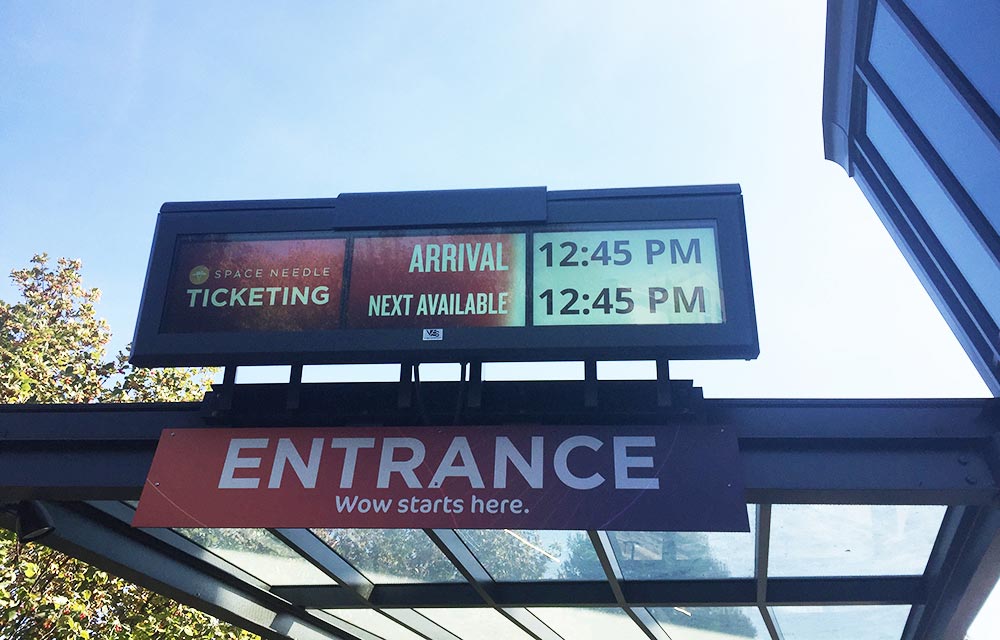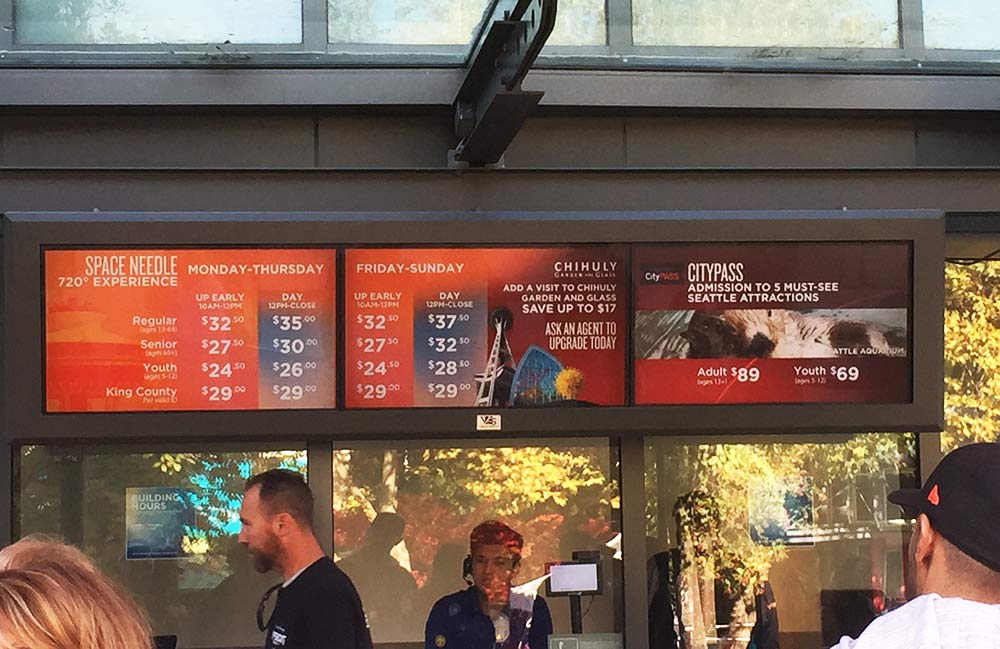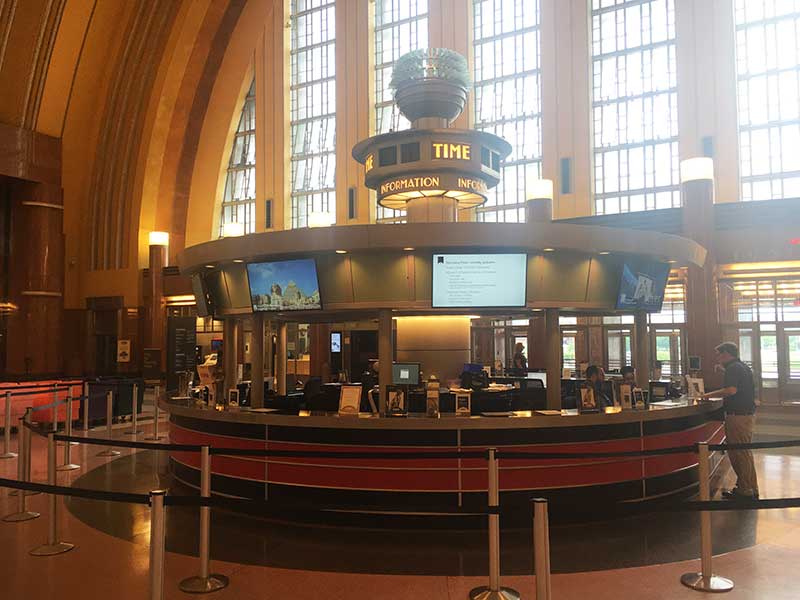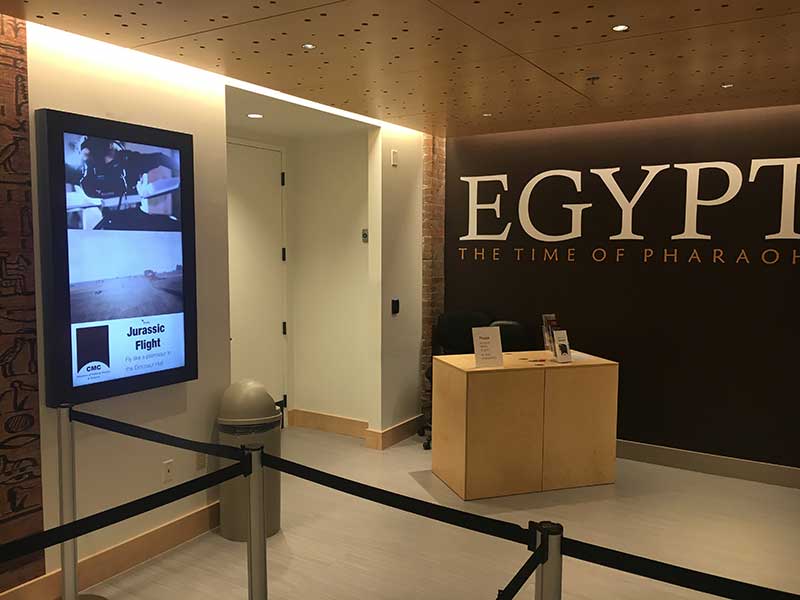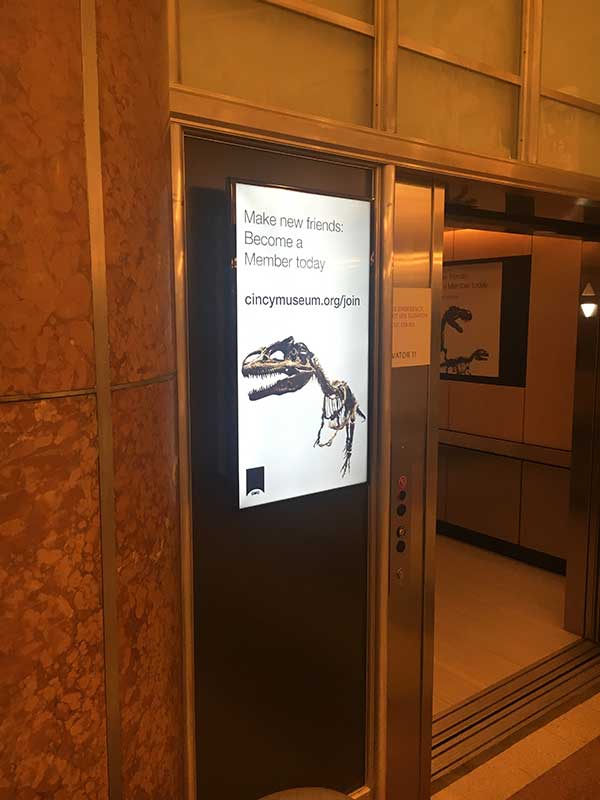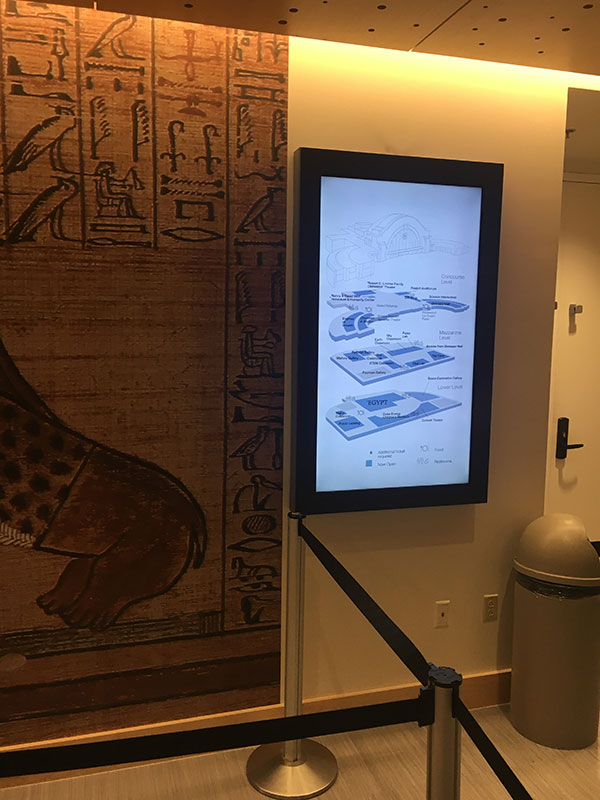When people go out to spend their hard-earned money, they want things to be as easy as possible so they can focus on the fun. Digital signage for tourist attractions is the flexible and scalable solution many venues are using to vastly improve the visitor experience (VX).
It doesn’t matter if the location in question is purpose-built, novelty, natural, or cultural; any type of attraction can benefit from adapting digital signage to their specific offerings. Some examples include:
- Museums (and galleries)
- Libraries
- Aquariums
- Theme parks
- Zoos
- Botanical gardens
- Sports stadiums
- Casinos
- Entertainment venues
- Riverwalks
- National parks
Even events can be attractions, such as festivals, markets, street parties, parades, marathons, temporary exhibitions and the like.
An obvious fit for digital signage is spaces that are primarily indoors. Adding interactive touchscreens or kiosks allows venues to supply even more information that visitors can access when and how they want to.
The lobby or entrance is a good place to start since all visitors pass through here. Just a few displays can accommodate hundreds of people a day, allowing them a moment to plan their visit before heading inside. And since many venues attract visitors from all over, content can be offered in several languages to make things even easier for visitors, regardless of where they’ve come from.
Your digital signs fall into roughly four broad categories – wayfinding, information, advertising and boards. All of these can be either static or interactive.
Wayfinding is a key feature many attractions use, supplying maps and displaying messages reminding people of the different areas they can visit. Some locations can be quite large, and having access to comprehensive maps can make all the difference to visitors. If you include a QR tag, people can even download the map to their phones. If there’s a lot to see, adding a directory of some sort to augment the wayfinding can be extremely helpful. Wayfinding can even help with parking lots – people can have the location of their car sent to their mobile, so they know exactly where to go once their visit is over.
Information that seldom changes, such as ticket prices, operating hours, background on the venue and permanent features can all easily be put into visual messages that have impact. Temporary exhibits, limited time offers, important announcements, special events or performances, and other “extras” can be included in playlists managed by digital signage software to add more excitement and variety to your messaging. For some attractions, it might even make sense to partner with nearby businesses, offering advertising space on the digital signs. This can serve as an extra source of revenue as well as further enhance the visitor experience.
For many venues, there’s some kind of food option available on site. Menu boards allow the nesting of dense amounts of information that people can sort through using interactive screens. You can show not only which items are currently available for purchase, but their nutritional information, allergy warnings and more. If you don’t have touchscreens, menu boards are still more economical and eye-catching than old, printed menus.
If a venue relies on donations to help with operating expenses, such as a museum, interactive donor boards allow people to see who’s giving at a glance and receive prompts to consider participating themselves.
One thing many attractions have is queues. These are expected, but digital signage can help make them seem less arduous. Integrating digital signage with a queuing system lets people see how long their wait is, which reduces perceived wait times. And while they’re waiting, the signs can display all of your other content as well, keeping people informed and occupied. Queue management can go further, helping prevent crowding or making sure a venue is not over capacity due to space limitations or health restrictions.
Sustainability is on everyone’s minds these days, and since digital signs use no paper or ink, there’s no waste to deal with. Messages that promote the facility’s green initiatives, such as recycling and carbon offsets programs, can be shown to remind everyone to do their part and show that the venue cares about the environment just as much as they do.
One of the biggest perks of a digital signage system for tourist attractions is the ability to integrate with a comprehensive alerting system. Take over all the screens at once or just those in areas that are affected to show weather or safety notices. Let people know the nature of the alert and give concise but comprehensive instructions as to what to do next to ensure their safety. Partnering with CAP-compliant apps helps take some of the burden of your team as well, since CAP alerts can automatically trigger alert notifications on screens.
The fact is that most people get their information from screens these days, and it just makes sense for tourist attractions to incorporate digital signage into their visitor communications. This makes the visitor experience more efficient and comfortable, reduces the amount of work your staff needs to do (freeing them up to give more personalized service), and saves money in the long run.
Whether it’s an amusement park, a national park, a museum, a stadium or a casino, digital signage for tourist attractions is the most efficient way to get timely, relevant information out to visitors in the fastest, most efficient way possible.
